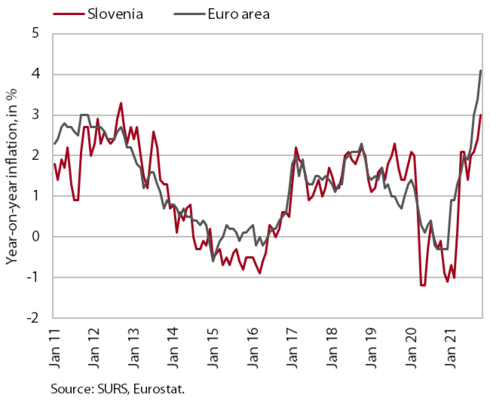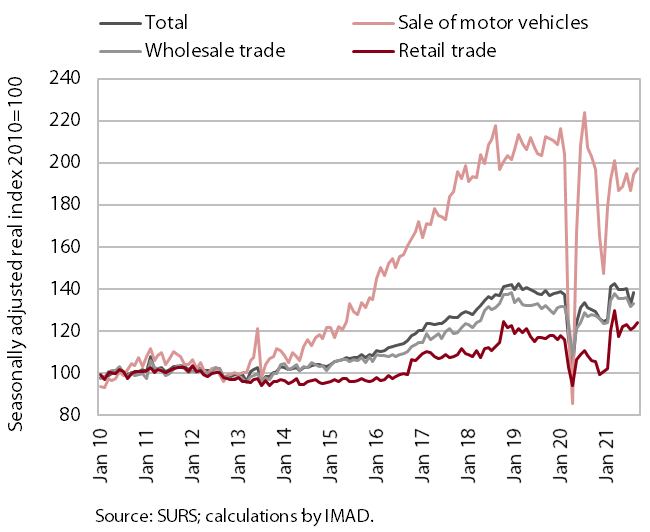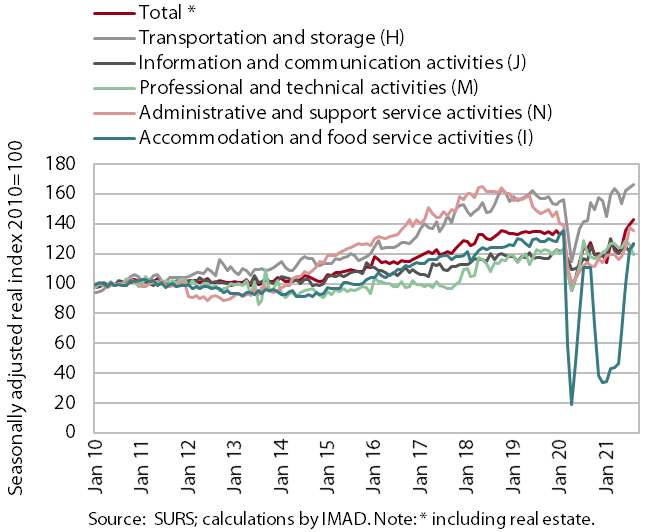Charts of the Week
Current economic trends from 25 to 29 October 2021: consumer prices, turnover in trade and turnover in market services
Consumer price inflation increased significantly year-on-year in October, mainly due to higher prices of petroleum products and heat energy. Prices of durable goods are also rising. Turnover in trade increased in August. In most sectors, turnover in the first eight months of the year combined was higher than in the same period of 2019. Turnover in market services also increased in August, with the strongest growth in information and communication services, while turnover in accommodation and food service activities has been rising strongly for several months.
Consumer prices, October 2021

Consumer price inflation increased significantly year-on-year in October (to 3.0%), with energy prices rising sharply. About two-thirds of the increase was due to higher prices for petroleum products (by more than 35% year-on-year) and heat energy (by almost 45%). In the face of higher commodity and energy prices and supply chain disruptions, the increase in durable goods prices strengthened further, reaching 4.6%. This is mainly due to higher car prices, which have risen significantly in recent months and were 5.6% higher year-on-year in October. Prices of semi-durable goods were lower year-on-year for the second month in a row (by 0.8%). Growth in services prices remains low at around 1%. Among services, the highest price rise was seen in accommodation and food service activities (5.9% year-on-year). In October, prices in the food and non-alcoholic beverages group were higher year-on-year for the first time since January (but only by 0.3%). In the coming months, however, we expect their growth to strengthen due to the low base and the expected increase in prices for certain food products.
Turnover in trade, August 2021

Turnover in trade rose in all three main segments in August, following a sharp decline in July; according to preliminary data, growth continued in September. Overall, turnover in the first eight months was 9% higher year-on-year and similar to the same period in 2019. Compared to 2019, it was lower only in the sale of motor vehicles and in the sale of motor fuel. In contrast, turnover in this period was 12% higher in the sale of non-food products within the retail sector, where sales via mail order and the internet more than doubled (accounting for around 7% of total turnover), while sales of pharmaceutical and medical products, as well as computer and telecommunications equipment rose by around a tenth. According to preliminary data, turnover in retail trade and motor vehicle sales further increased in September.
Turnover in market services, August 2021

In August, real turnover in market services continued to rise. It increased by 2.3% from the previous month and by 15.3% from a year earlier. Due to the significant growth in computer services in the domestic and foreign markets, the highest increase in turnover was recorded in information and communication services where turnover had stagnated for a long period of time. In recent months, turnover in accommodation and food service activities has increased significantly, which is related to the increase in overnight stays by foreign and domestic tourists, as well as same-day visitors redeeming their last year’s and this year's vouchers. Turnover, which was 14% higher year-on-year, was still 2% lower than in August 2019. Transportation continued its moderate growth, fuelled mainly by storage activity. Turnover further declined in professional and technical activities, due to a significant fall in architectural and engineering services. Despite further increase in travel agencies, turnover also declined in administrative and support service activities. Only in a few other activities, such as travel and employment agencies, was the gap with turnover in the same month of 2019 significant.
